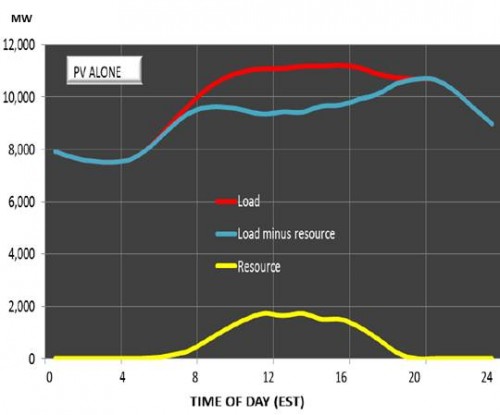The Beautiful Thing about Offshore Wind & Solar Combined
Wind and solar, on their own, each have wonderful qualities, qualities that make them the two most popular electricity choices and that make them two of the cleanest. However, something that I think doesn’t get nearly enough attention is that solar and wind complement each other greatly.
Solar energy and wind energy peak at different times.
Offshore wind is an especially good match because it peaks later in the day than solar, after the hot sunshine has soaked into the earth and stimulated a breeze offshore, but while electricity demand is still peaking.
“When heat builds up on land along the coast with the cold ocean next to it, there is a natural updraft and a down draft at sea,” State University of New York atmospheric sciences researcher Richard Perez says. “The wind comes in. Inland a few miles, there will be no wind but on the coast and immediately offshore there will be. If you have been on the beach on a hot afternoon, you will know this.”
Getting more specific, here are some general peak times for solar and offshore wind:
“The sun will peak at noon,” Perez says. “Offshore wind will peak at 7 p.m. or 8 p.m., and the load peaks at 3 p.m. or 4 p.m. in big cities like New York, Baltimore, and Washington, D.C., so the wind and solar are really complementary.”
Here are 3 graphs further making this point:



In Conclusion: Offshore Wind & Solar Are a Match Made in Heaven
“What we found out,” Perez said, is that “the more you put those two technologies on the grid, the bigger the synergy effect. At very low penetration, like 1 percent or 2 percent, PV does very well alone; it doesn’t need wind. But as you gradually penetrate from 2 percent all the way to 40 percent, the synergy between them grows. When you reach that 30 percent or 40 percent penetration, you see that solar absolutely needs wind, because you need to address that later part of the peak in the day.”
The researchers’ modeling showed, as other modeling has, that there is “almost twice the capacity value with wind and solar than you would get with solar alone at 30 percent penetration. And compared to wind alone, it is huge, maybe five or six times.”
Solar energy and wind energy peak at different times.
Offshore wind is an especially good match because it peaks later in the day than solar, after the hot sunshine has soaked into the earth and stimulated a breeze offshore, but while electricity demand is still peaking.
“When heat builds up on land along the coast with the cold ocean next to it, there is a natural updraft and a down draft at sea,” State University of New York atmospheric sciences researcher Richard Perez says. “The wind comes in. Inland a few miles, there will be no wind but on the coast and immediately offshore there will be. If you have been on the beach on a hot afternoon, you will know this.”
Getting more specific, here are some general peak times for solar and offshore wind:
“The sun will peak at noon,” Perez says. “Offshore wind will peak at 7 p.m. or 8 p.m., and the load peaks at 3 p.m. or 4 p.m. in big cities like New York, Baltimore, and Washington, D.C., so the wind and solar are really complementary.”
Here are 3 graphs further making this point:



In Conclusion: Offshore Wind & Solar Are a Match Made in Heaven
“What we found out,” Perez said, is that “the more you put those two technologies on the grid, the bigger the synergy effect. At very low penetration, like 1 percent or 2 percent, PV does very well alone; it doesn’t need wind. But as you gradually penetrate from 2 percent all the way to 40 percent, the synergy between them grows. When you reach that 30 percent or 40 percent penetration, you see that solar absolutely needs wind, because you need to address that later part of the peak in the day.”
The researchers’ modeling showed, as other modeling has, that there is “almost twice the capacity value with wind and solar than you would get with solar alone at 30 percent penetration. And compared to wind alone, it is huge, maybe five or six times.”
You can return to the main Market News page, or press the Back button on your browser.

